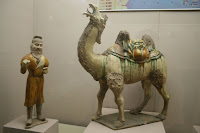Salvete Omnes,
this is not a review, just about a fiction book and the series I finished reading last week.
ad rem,
for years I had enjoyed the Last Kingdom saga woven the British master storyteller Bernard Cornwell, and this time master raconteur delivered his final[?] word in the saga of a Northumbiran warlord named Uhtred of Bebbanburg.
This 13th novel in the sagas is a good old fashion hero story.


Its epic story is woven around the events of 930s leading to one of the most eventful battles in British history, the battle of Brananburh, AD 937 also known as the Great Battle. The story of this battle is also told, and it is told with a skill and mastery typical to master Bernard
According to many historians this was this battle where the sweat, skill, blood and sacrifice of the England's warriors truly forged the united kingdom and allowed for dominance of England within the British Isles.
Saxon king Aethelstan, who was the grandson of Alfred the Great, defeated the army commanded by king Anlaf Guthfrithsson, which was comprised of the Viking Norse (from Orkney Islands and Ireland), Scots under king Constantine II of Alba, and other minor kingdoms' adversaries.

In the context of the novels we finally get Uhtred, the main hero, in his manly warrior twilight, for in this 13th installment he is old and aching, but still very cunning, savvy, skillful with his weapons and martial experience with his two trusted weapons, his sword named Serpent Breath and a
seax named Wasp Sting - eg before the Great Battle we get this delightful accounting of old warlord Uhtred getting armed for this battle .
Within the meandering towards the epic battle story we get much detailed but nor overbearing vision of the period daily life, including foodstuffs, camping, horseback riding, war stallions and their names and also stories of the Viking saga lore and Christianity. Finally last but not least we get some fine sword duels, strength and horse riding feats, cavarly charges, and the final epic shield wall etc - :) as in this
video from the Wolin Slavic and Viking Festival AD 2015.
Bernard Cornwell has based his storytelling on traditional sources (eg
the poem) and some of the most recent scholarship - eg this
YT lecture my be of interest to you, as it is a magnificent feat of scholarship and analysis.
Thus my wholehearted congrats to master Cornwell for delivering us this final epic tale.
Nota bene I have had not opportunity to draw or paint Saxon warriors and thier horses yet, who knows, perhaps one day. But there is
this article about the horses in Anglo-Saxon England and Saxon cavalry, including using the
Maxims or Old Poems .
Valete
ps
Note I am not going to say much about the Netflix series supposedly based on the novels, I did try watching the first season and did not suffer past 2nd or 3rd episode. I did watch the entire Netflix Witcher series, horrible as it was, hoping for the episodes to improve. They did not, sadly.
On the other hand I enjoyed the film version of the comissario [inspector] Salvo Montalbano series (based on the fabulous novels by Andrea Camilleri and translated into English by with love, passion and skill by master translator Stephen Sartarelli), and these can be leisurely watched on Netflix.

















































